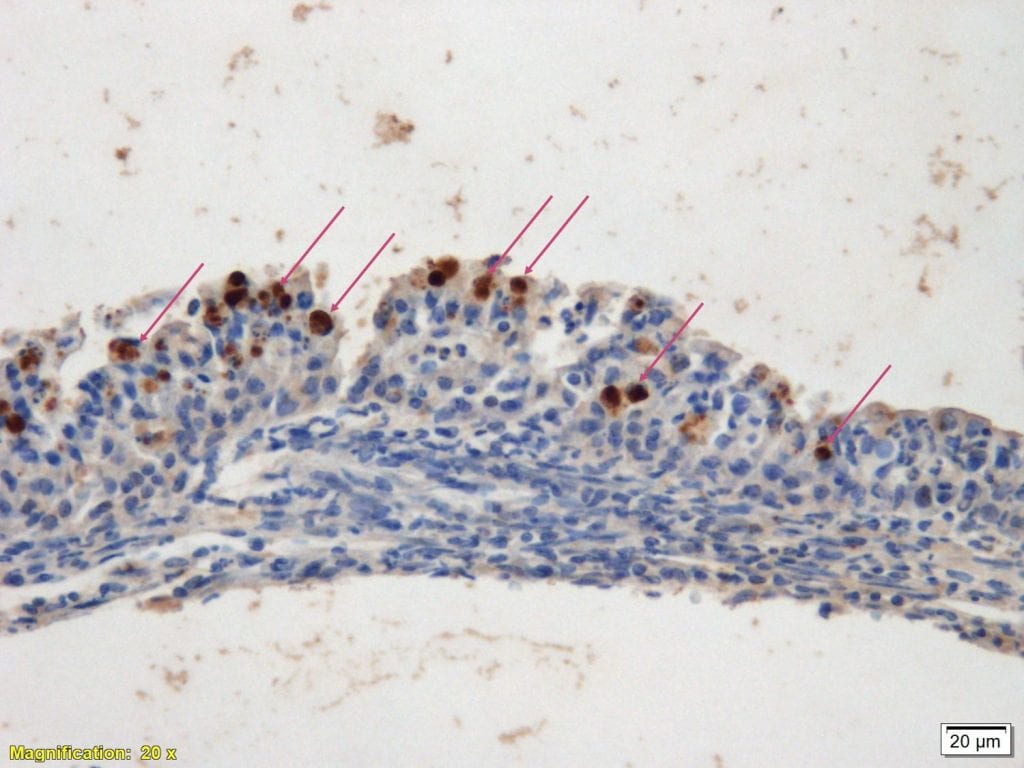Calibration of IHC for Covid-19 virus in Golden Syrian Hamsters
Dr. Emmanuel loeb, Dr. Zohar Gavish, Patho-Logica Ltd.
Results:
- The objective was to detect a specific IHC signal in relevant structures of the lung in paraffin sections (4 microns thick).
- Two animal groups were examined: covid-19 intranasal infected hamsters and a Naïve group.
- Primary serum Ab was diluted to 1:6000. This was the optimal concentration for the IHC reaction.
- The results showed positive reaction in the infected animals only. The positive structures were alveolar macrophages, Ln. macrophages, bronchial epithelium and Clara cells.
- In the Nasal Cavity positive reaction were noted in respiratory epithelium, macrophages, lacrimal glands and in inflammatory cells.
Left picture, Naïve animal showing negative signal with some slight non-specific background staining.
Right picture, Affected animal. Low mag. Alveolar macrophages are loaded with positive marked virus in their cytoplasm.
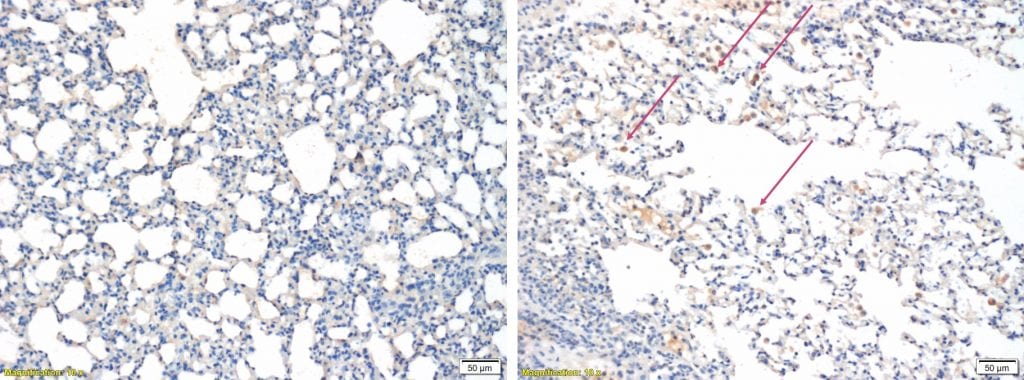

Lung, Positive alveolar macrophages (red arrows), Note the different macrophages with different stain intensities. X20 IHC for Covid-19.
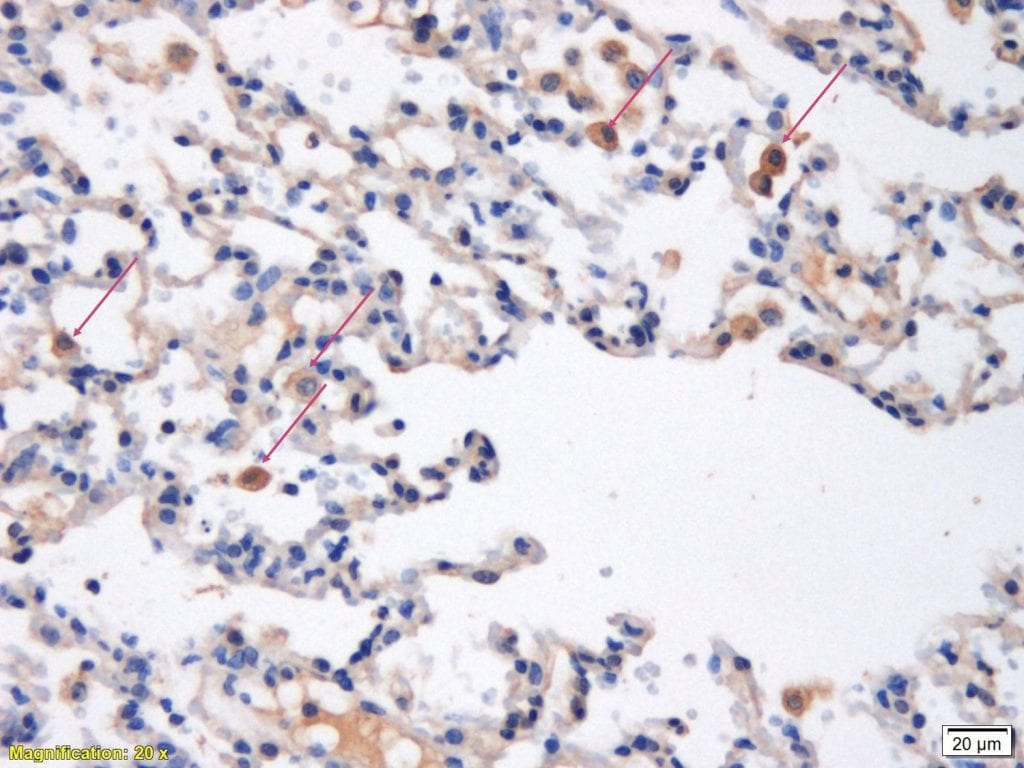

Lung, Positive alveolar macrophages (red arrows), X20 IHC for Covid-19.
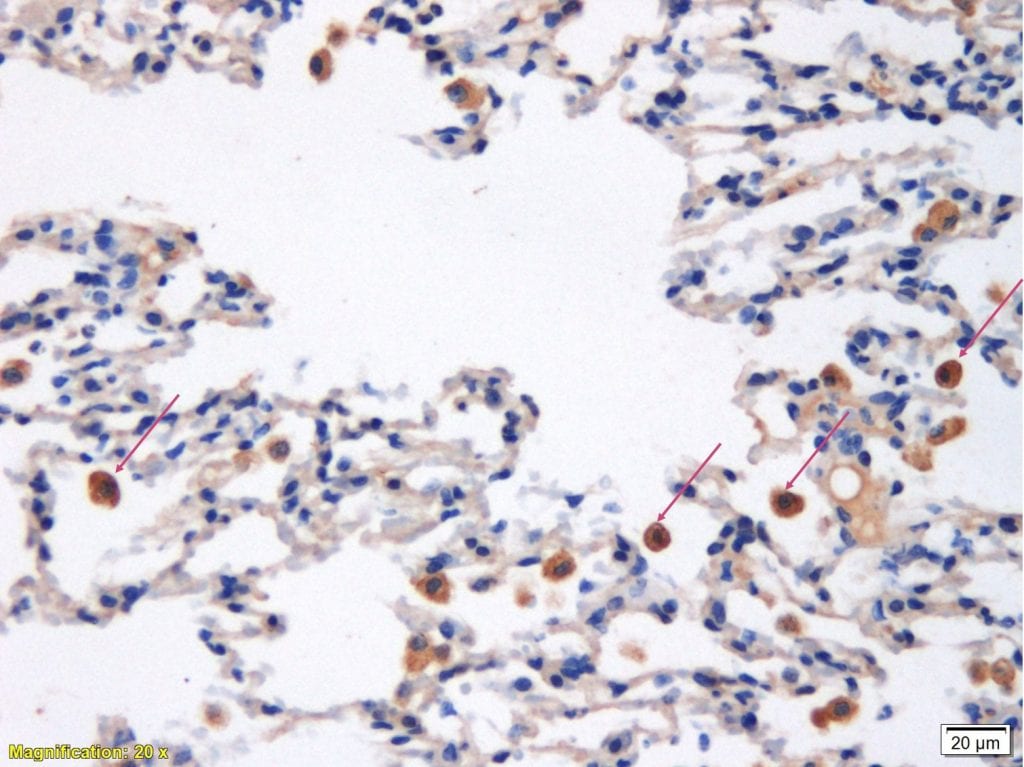

Bronchial Lymph Node, medulla sinuses, migrating macrophages, Positive staining (red arrows), X10 IHC for Covid-19.
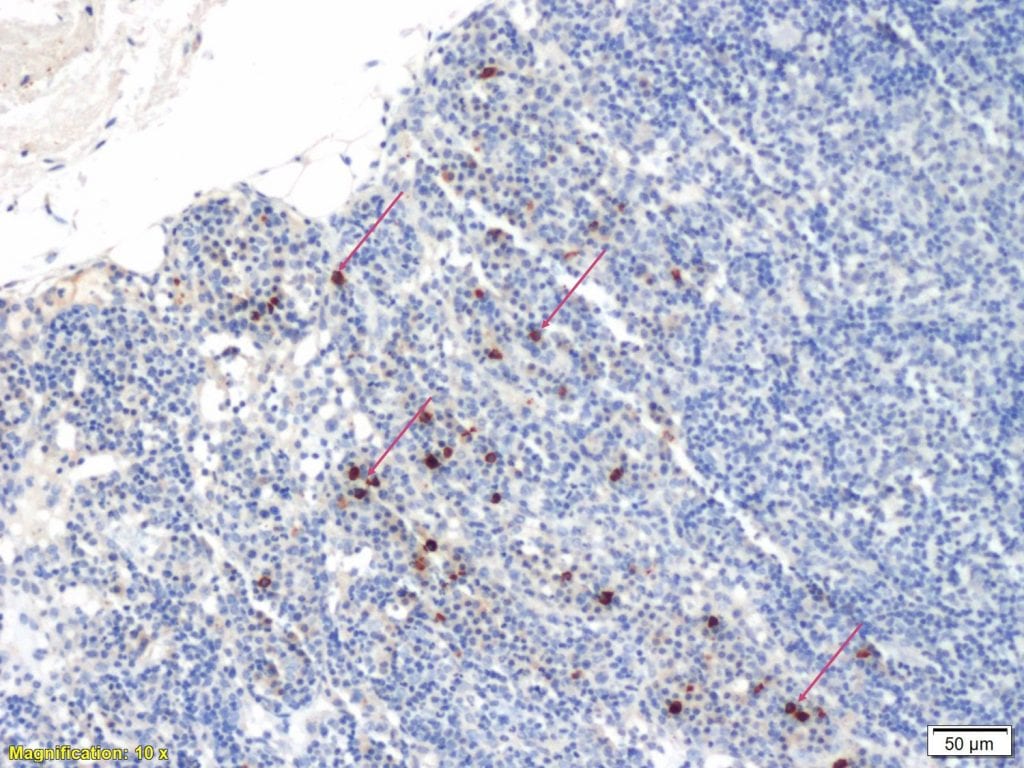

Bronchial Lymph Node, medulla sinuses, Positive macrophages (red arrows), X20 IHC for Covid-19.
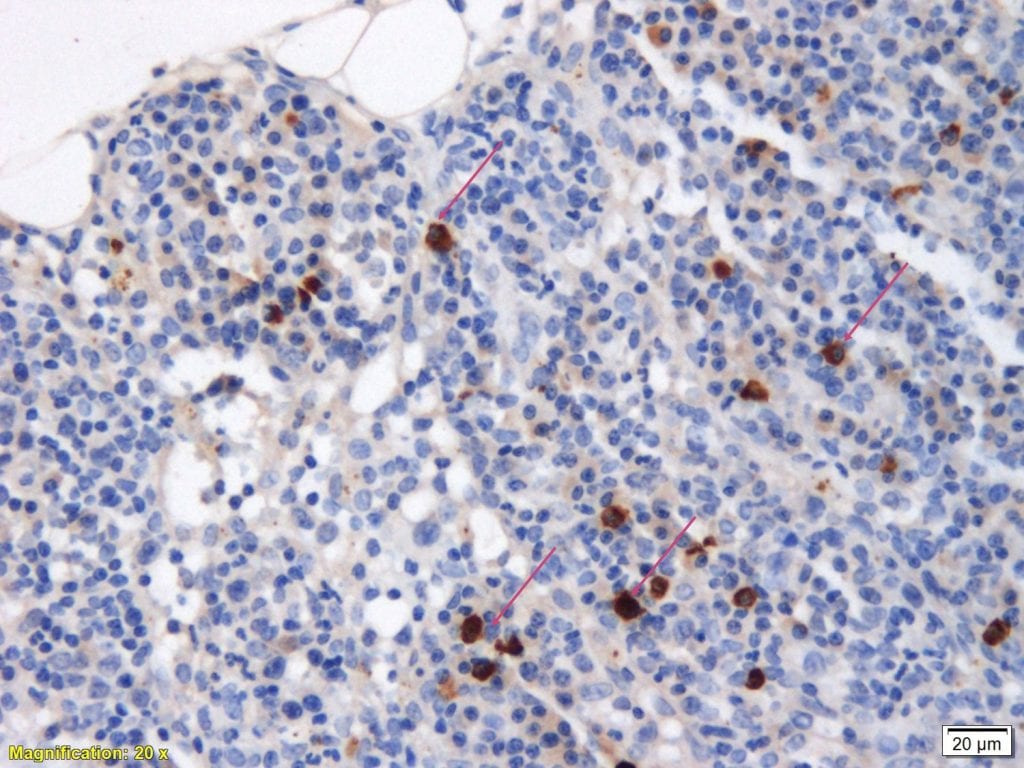

Lung, bronchioles, positive reaction in lumen (debris) and in bronchial epithelial cells. (red arrows), X20 IHC for Covid-19.
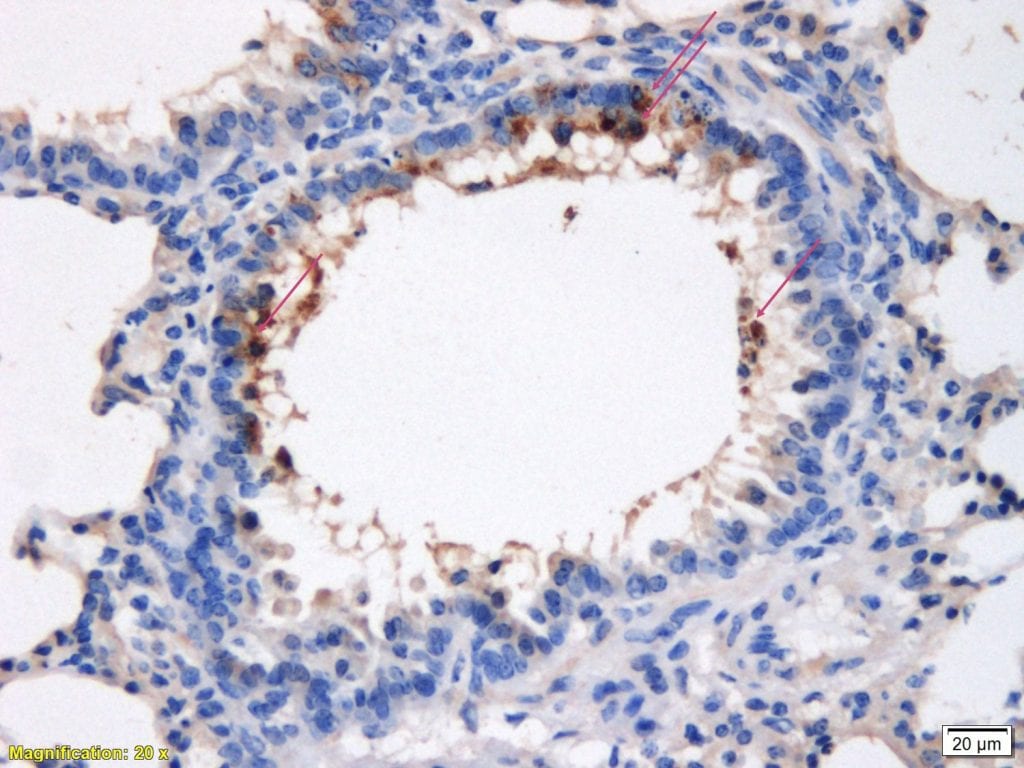

Lung, bronchioles, positive reactions in luminar debris and in few bronchial epithelium cells. (red arrows), X20 IHC for Covid-19.
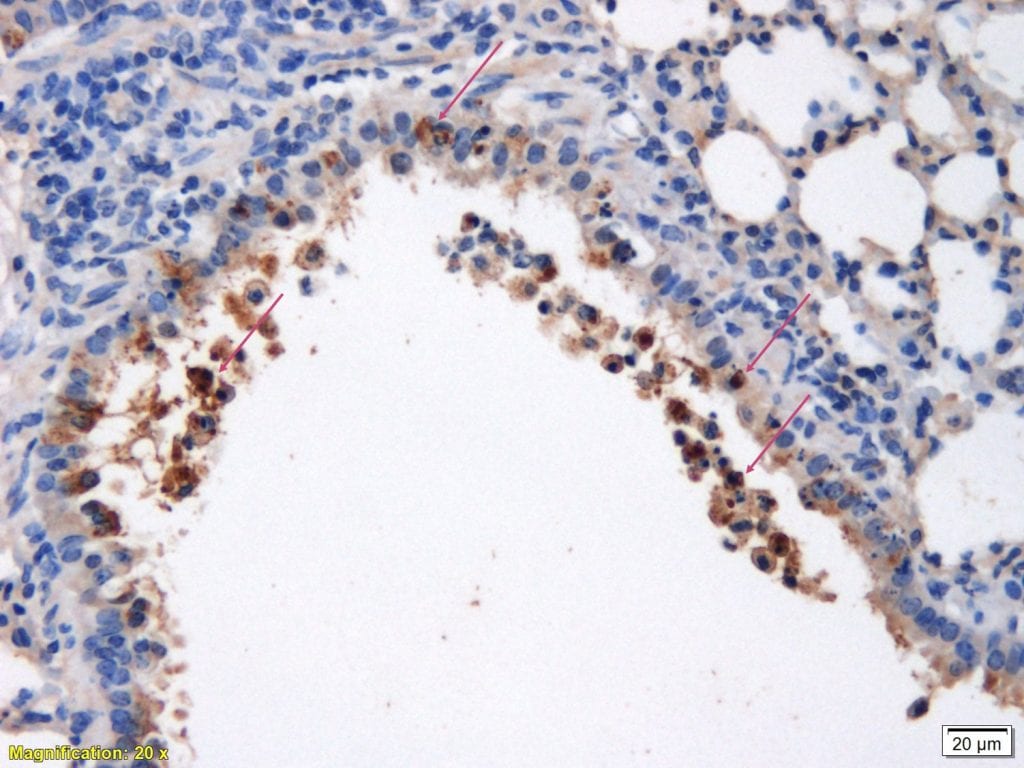

Lung, bronchioles, positive reactions in luminar debris and in few bronchial epithelium cells. (red arrows), X20 IHC for Covid-19.
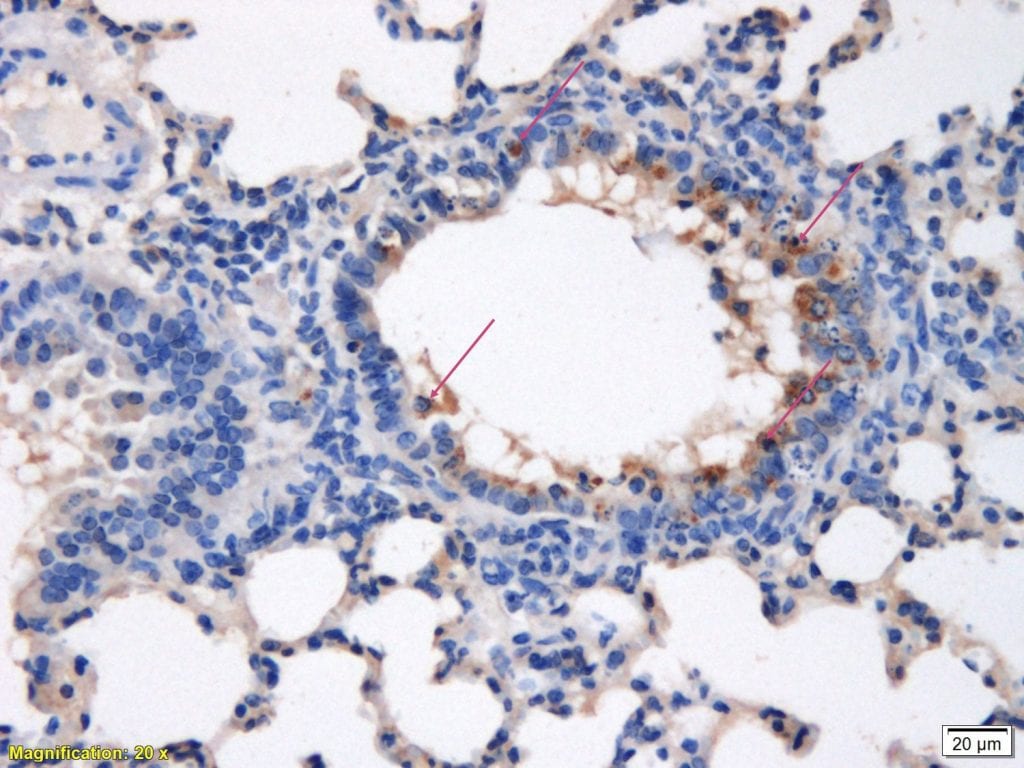

Lung, bronchioles, positive reactions in luminar debris and in few bronchial epithelium cells. (red arrows), X20 IHC for Covid-19.
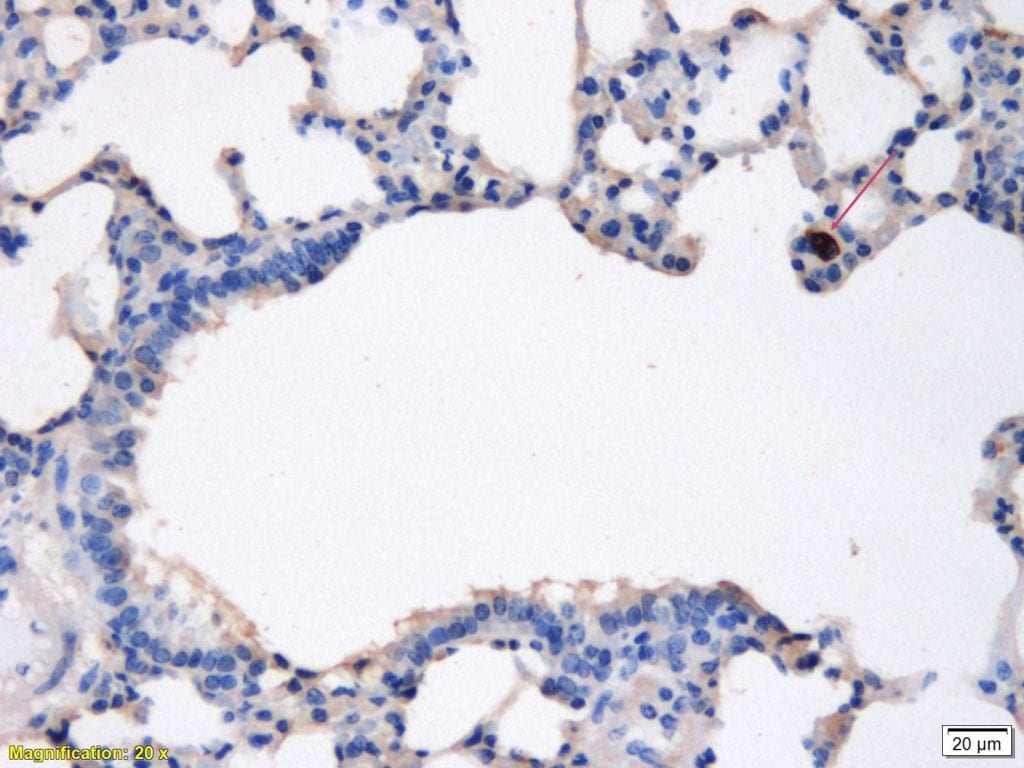

Left picture, Animal #201, Naïve animal showing negative signal.
Right picture, Animal #193. Low mag. Respiratory epithelium and submucosa are loaded with positive reaction for the virus.
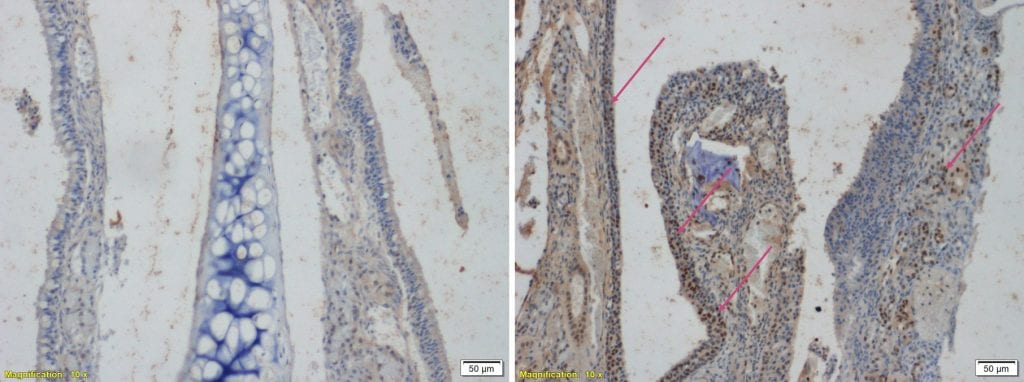

Nasal Cavity, positive reaction in the basal cells of the epithelium (red arrow) and in blood vessels (yellow arrow), X20 IHC for Covid-19.
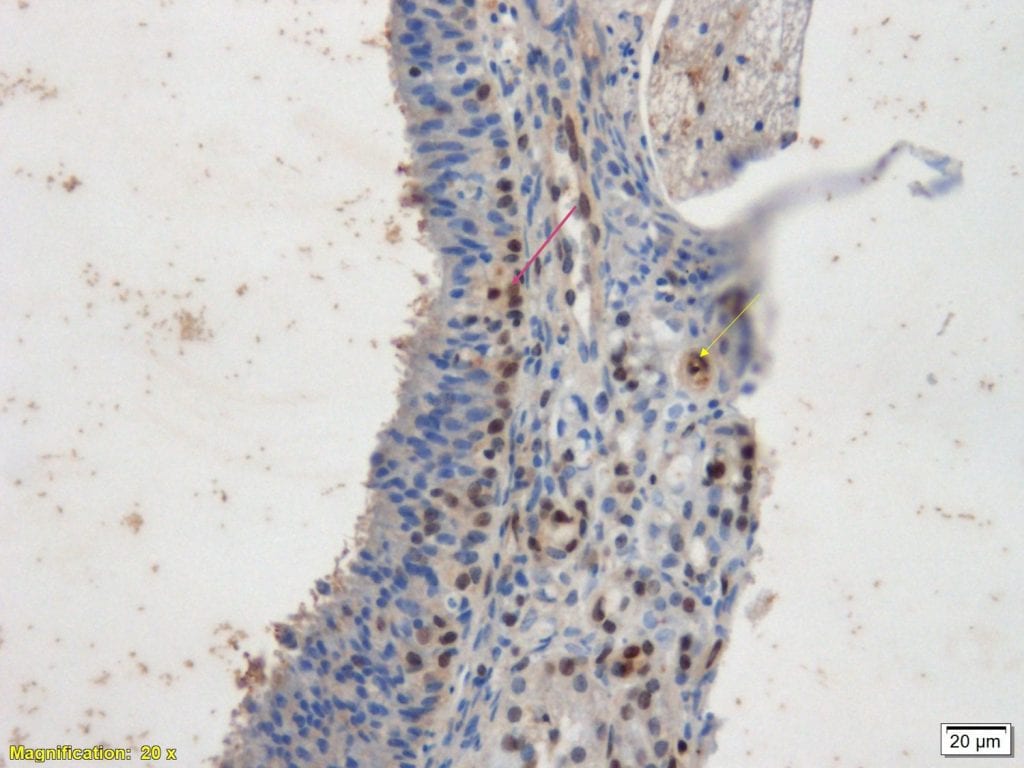

Nasal Cavity, positive reaction in basal cell layer (red arrows) and in cells the submucosa (blue frame), X20 IHC for Covid-19.
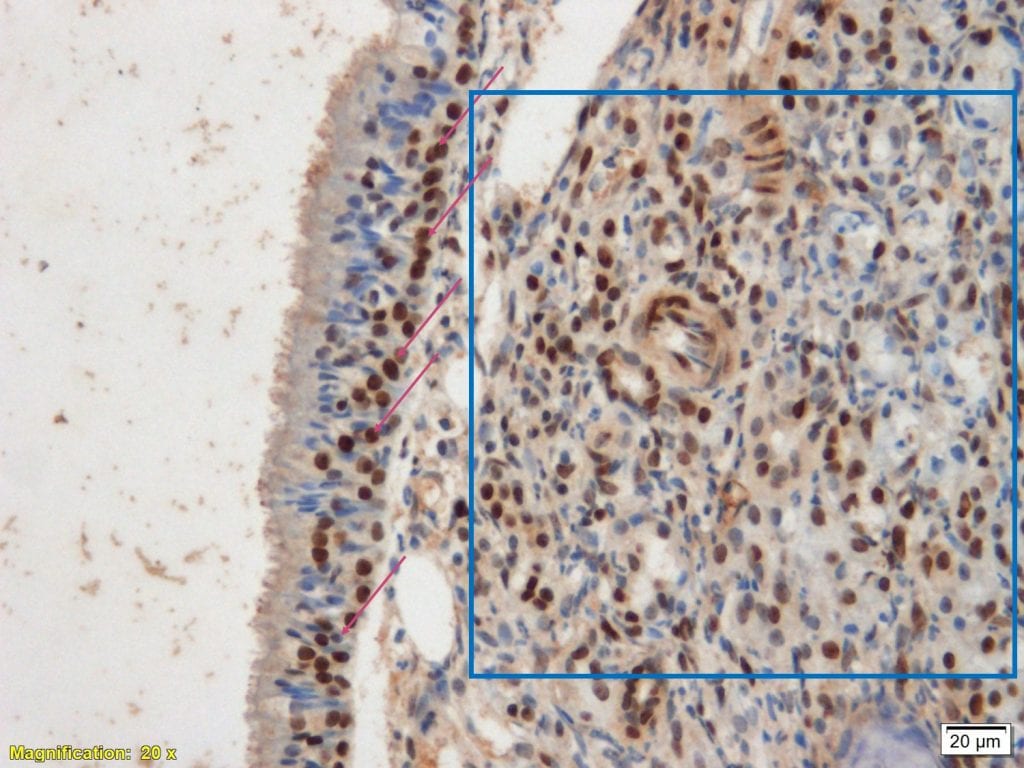

Nasal Cavity, positive reaction in the glands including secretion (red arrows), X20 IHC for Covid-19.
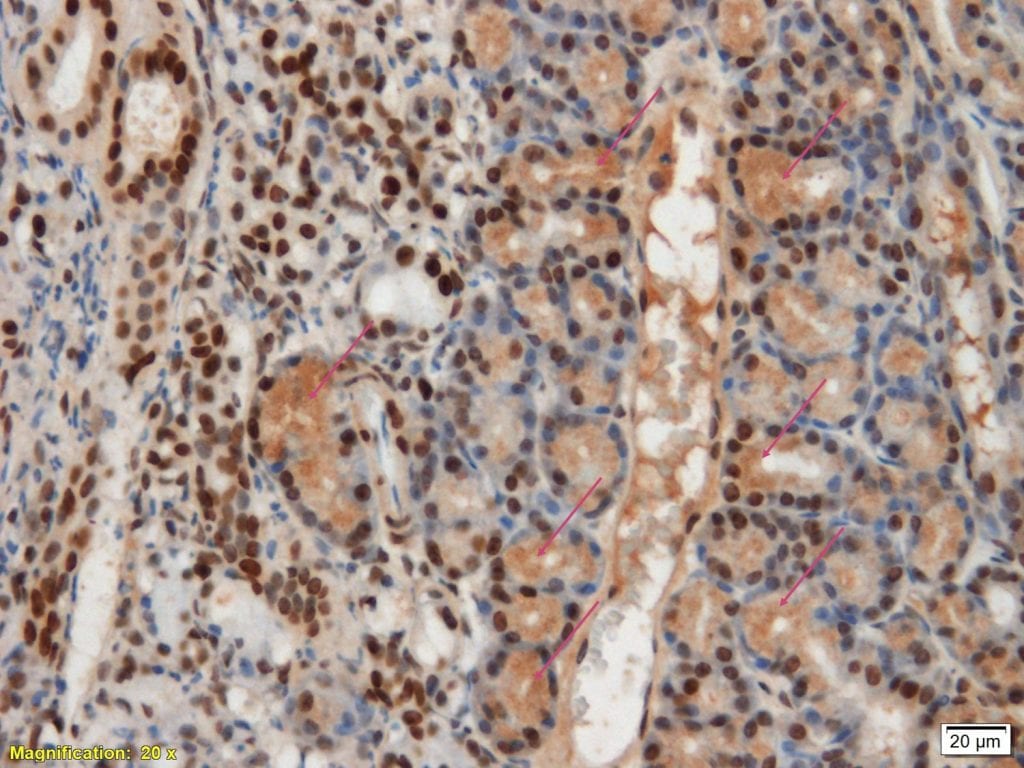

Nasal Cavity, positive reaction in the surface of the respiratory epithelium (red arrows), X20 IHC for Covid-19.
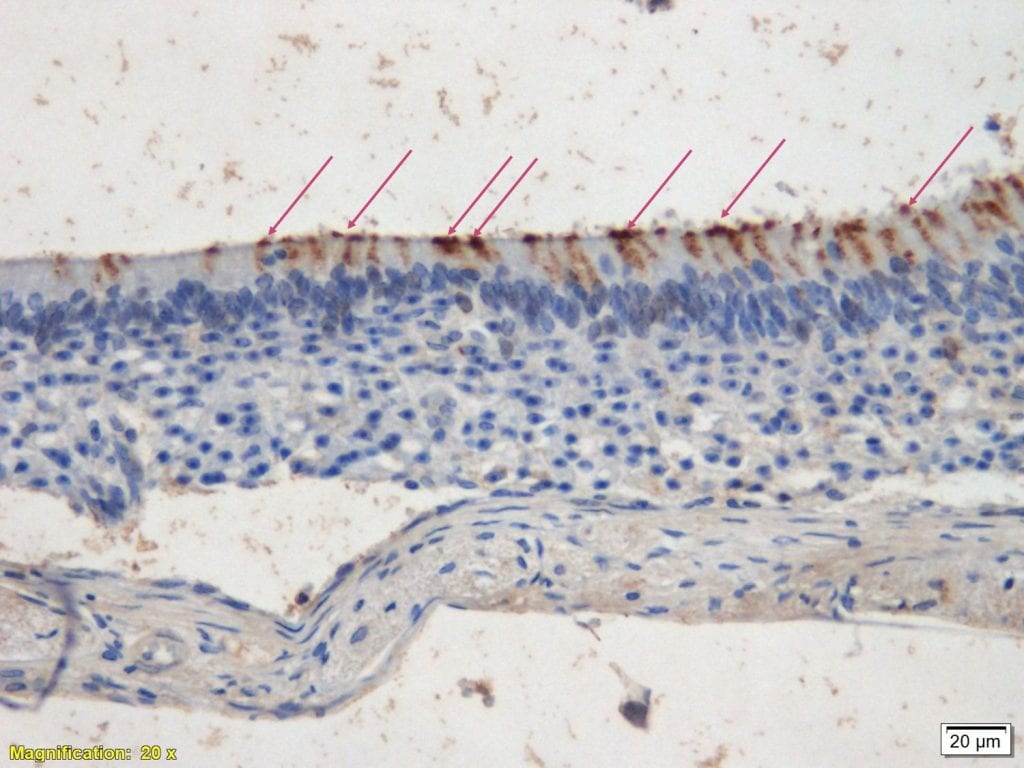

Nasal Cavity, positive reaction in the affected respiratory epithelium (red arrows), X20 IHC for Covid-19.
